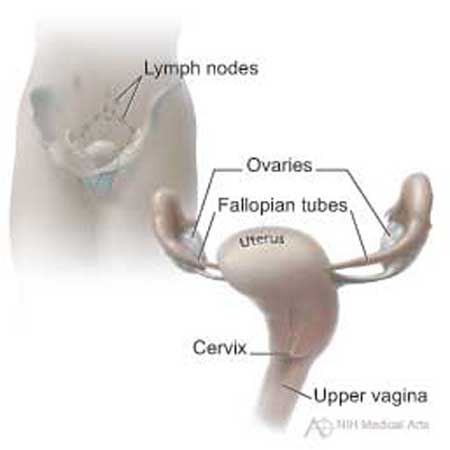|
The Cervix
The
cervix is part of a woman's
reproductive system. It is the lower, narrow part of the
uterus (womb). The uterus is a
hollow, pear-shaped
organ
in the lower
abdomen. The cervix connects the
uterus to the
vagina. The vagina leads to the
outside of the body.
The
cervical canal is a passageway.
Blood flows from the uterus through the canal into the vagina during a woman's
menstrual period. The cervix also
produces
mucus. The mucus helps
sperm move from the vagina into the
uterus. During pregnancy, the cervix is tightly closed to help keep the baby
inside the uterus. During childbirth, the cervix
dilates (opens) to allow the baby
to pass through the vagina.

This picture shows the cervix and nearby organs.
|
< Previous Section | Next Section > |